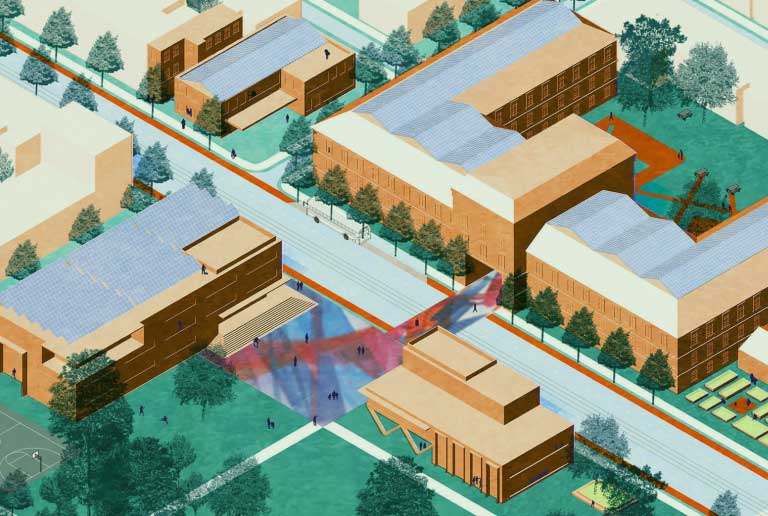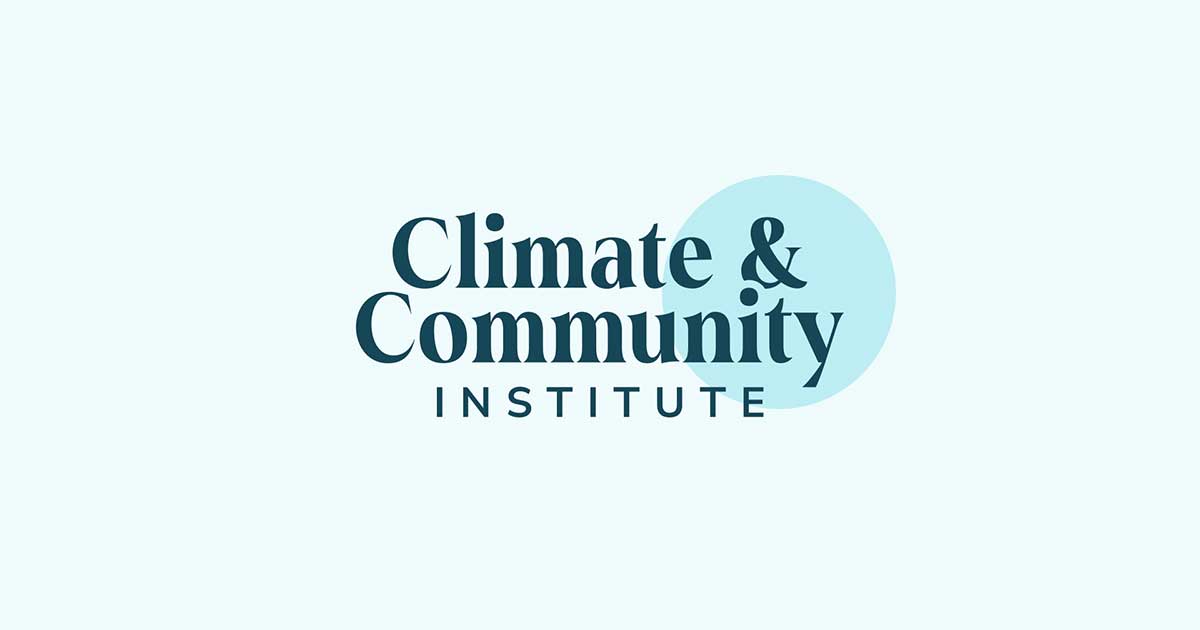Funding a Green New Deal for Public Schools

Public schools are central to America’s deeply held ideals—they are where we incubate democracy and cultivate empathy. They are the centers of our communities. But our public schools are not the temples to these ideals that they should be. Public schools across the United States are crumbling, dilapidated, and unsafe. They circulate toxic chemicals, have leaking roofs and lack functioning toilets. Many students spend at least part of the school day learning in trailers., These problems are most common in schools that serve low-income and minoritized students, where funding policies based on community wealth drive disparities that are compounded by historical race- and class-driven disinvestment. While countries with some of the most successful education systems, like Finland and South Korea, have initiated major redesigns to modernize their school buildings and optimize them for learning, the average public school in the United States was 44 years old in 2013 and had not had a major renovation in more than a decade., A 2020 report estimated that 54 percent of public school districts needed to update or replace multiple systems or features in their school buildings.
As the climate crisis makes storms, heatwaves, and wildfires ever more severe, it becomes clear that school infrastructure is in a state of crisis. Temporary buildings, used in nearly a third of schools in the United States, are particularly vulnerable to floods. In 2019, 41% of surveyed districts reported needing to update or replace their heating, ventilation, and air conditioning systems. Extreme heat that gripped large swaths of the country in August and September forced many schools to close just as the school year was beginning. According to one study, nearly 14,000 public schools that did not need cooling systems in 1970 will need them by 2025. This comes after schools across the US northeast canceled outdoor activities and opted for early dismissals last spring, when smoke from extreme wildfires created hazardous air quality conditions. Schools with outdated ventilation systems cannot protect students from extreme heat or poor air quality—and research shows that school-age children are particularly vulnerable to air pollution.
Meanwhile, enrollment fluctuations present additional challenges for districts trying to maintain their school facilities. Before the COVID-19 pandemic, enrollment was steadily increasing: there were nearly 5 million more K-12 students enrolled in public schools in 2020 than in 1995. Higher enrollment means both more wear and tear on school infrastructure and a growing need for additional classroom and facilities space. But undertaking large-scale capital projects is challenging for most school districts. Financing capital projects often involves taking on debt to cover the substantial lump sums required to finance them, which involves winning voter approval in 47 states—and ten of these states require supermajorities to approve bond issuance. Some states also limit the amount of debt districts can take on to 11 percent of assessed property values on average (across 40 surveyed states). These rules make it more difficult for lower-wealth districts to finance capital improvements.
Since the pandemic, enrollment has declined and chronic absenteeism has increased. This presents a new challenge for districts because funding levels are tied to enrollment or attendance. A large portion of districts’ expenses are fixed costs, including facilities—and when their funding decreases because of enrollment declines or attendance problems, they have even less money to put toward maintaining facilities. This, in turn, can lead to school closures, which have adverse effects on students’ math and reading achievement, particularly for Black students and special education students. These closures also disproportionately affect schools located in low-income and minoritized neighborhoods, forcing deep disruptions on these communities.
With aging school buildings, financial barriers to making major improvements, climate change creating profound risks to students’ health and safety, and enrollment fluctuations affecting both facilities and funding, school infrastructure in the United States has reached a crisis point. In 2021, the American Society of Civil Engineers graded US school infrastructure at a D+. The longer buildings go without updates or improvements, the more expensive and time-consuming these improvements become. And, although education funding overall has become more progressive over time—with states directing more funds toward lower-wealth school districts—funding for capital improvements is persistently inequitable. In approximately half of school districts nationwide, money for capital spending comes primarily from local funding sources—meaning wealthier districts can finance building improvements while lower-wealth districts cannot. Leaving poorer districts to fend for themselves while schools leak poison from their walls and sinks, have plumbing problems severe enough to cancel school, or see their roofs cave in ensures mounting expenses and growing threats to student and teacher safety.
These risks become ever more acute as the impacts of climate change create more severe floods, fires, and temperatures. Mostublic schools lack features that can make buildings more resilient and resistant to climate disasters, and are not in any condition to withstand severe flooding or intense heat waves, nor can they maintain adequate air quality during wildfires. And outmoded facilities not only face greater risks from climate change, they also contribute to it. The energy inefficiencies of aging school infrastructure produce excess greenhouse gasses that accelerate the pace of climate change. The climate crisis is making the urgent need to improve our school buildings even more acute. schools lack features that can make buildings more resilient and resistant to climate disasters.
We advocate for increasing federal funding to improve crumbling school buildings to make them into safe environments that promote learning and community, repair and replace aging structures and systems to increase energy efficiency and promote climate resilience, and construct new energy-efficient school buildings designed to center student learning and interaction that can accommodate larger enrollments and withstand the effects of the climate crisis. Disparities in school facility quality, long-exacerbated due to chronic race- and class-based disinvestment and dependence on local property values, disproportionately affect marginalized communities. Increasing funding for school infrastructure is an opportunity for the federal government to right these historical wrongs and make impactful investments that will improve learning and invigorate communities.



